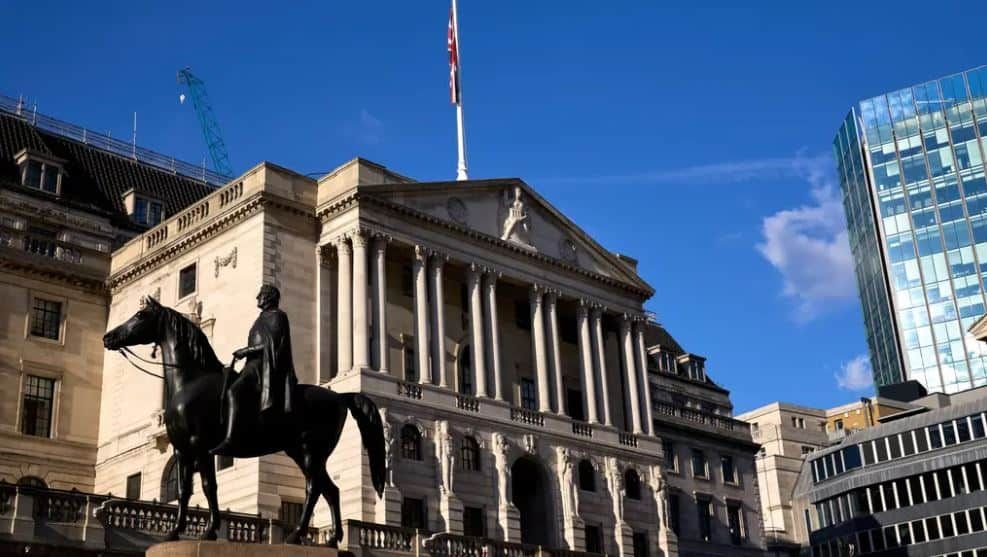
Reform UK said its plan to stop the Bank of England from paying interest to commercial banks who hold quantitative easing reserves would “save around £35 billion per year” and has been endorsed by a series of high profile people and groups.
The party’s plan, released on Monday June 17, said: “Bank of England must stop paying interest to commercial banks on QE reserves.
“This approach would save around £35 billion per year and has been endorsed by senior figures at the Financial Times, New Economics Foundation, and IFS, as well as two former Deputy Governors of the Bank of England.”
The New Economics Foundation (NEF) has spoken in favour of changes that could reduce the amount that the Bank of England pays to commercial banks.
The Institute for Fiscal Studies (IFS) has also said there are arguments in favour of a change.
However neither believes that it could save the Government £35 billion a year.
Commercial banks are paid interest on the money they hold with the Bank of England. That includes the money from the quantitative easing that the Bank embarked on in the wake of the financial crisis of 2008.
The Bank currently pays 5.25 per cent on these deposits – that is the same as the official base interest rate.
As of June 12, 2024 the Bank held around £697.6 billion in its Asset Purchase Facility (APF), which houses the assets the Bank bought during quantitative easing. Reform’s document did not explain its calculations, but it has likely arrived at its figure by taking 5.25 per cent of around £700 billion.
In a publication from November 2023, the New Economics Foundation think tank said the Bank of England could limit the amount of interest it pays to commercial banks.
The NEF said the Bank could “pay interest on a smaller portion of reserves”. That would mean savings of £11.5 billion per year, far lower than Reform’s £35 billion claim.
A 2022 report for the Institute for Fiscal Studies by Harvard Kennedy School research fellow and former Bank of England deputy Governor Sir Paul Tucker said as interest rates were rising, the current system “will add to strains on the public finances”.
It said “reasons exist” for implementing a tiered structure which could reduce the cost for the Bank, but it did “not recommend that the Bank and Treasury should definitely pursue that course immediately”, saying that there were other considerations to weigh up.
In its response to Reform’s plan, the IFS on Monday June 17 said “there is a respectable argument” for making changes to the way the system is currently set up.
“But,” it added, “whether a good idea or not, it would raise a lot less than £35 billion per year”.
It is unclear if Reform’s figures take into account the widely-expected possibility that the Bank of England’s base rate would be cut. This would save the Bank money on interest payments to the commercial banks.
In May the market was expecting rates to fall to 4.5 per cent by the second quarter of next year and further to 4 per cent in the following year.
The Bank is also currently reducing the value of the APF to around £658 billion by September 2024. It could also decide to reduce that further in the years to come. That would in itself reduce the amount of interest that banks are paid.
A round-up of analysis published by Tax Policy Associates – an outfit founded by a tax lawyer who is also a member of Labour’s National Executive Committee – said: “Reform UK’s revenue projections therefore appear to be over-stated by at least £15 billion and possibly as much as £30 billion.”
Reform UK has been contacted by the PA news agency.